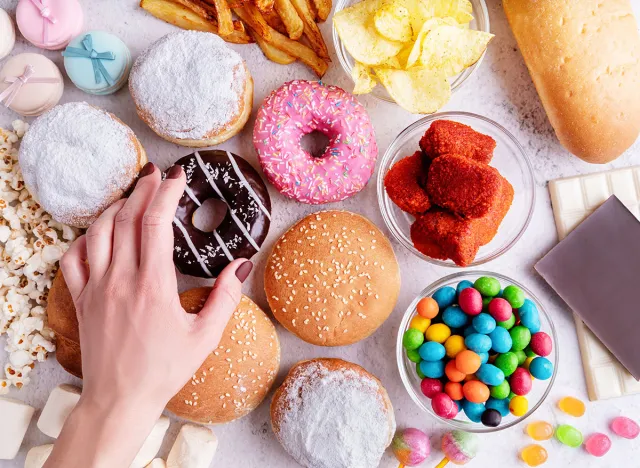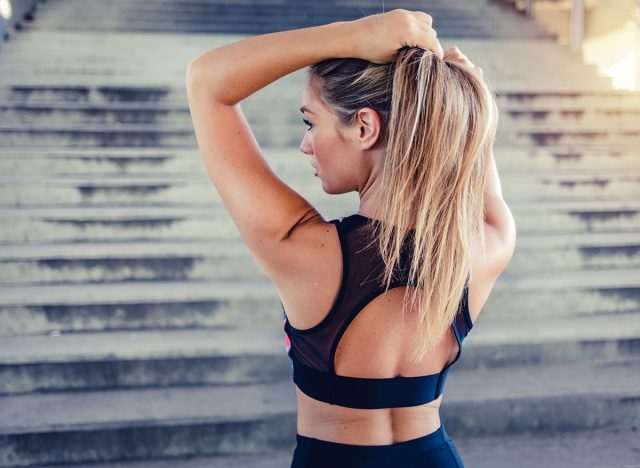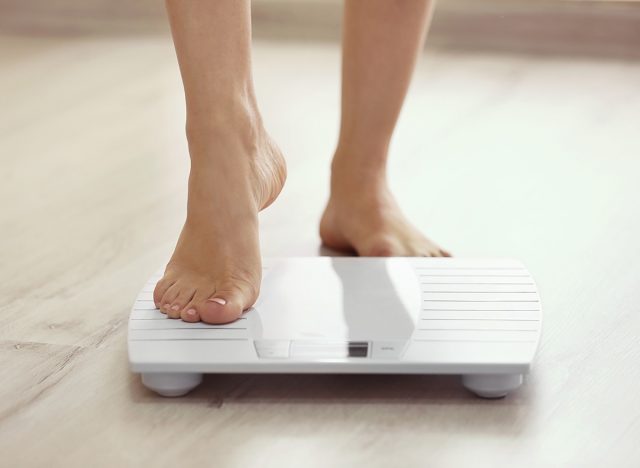I Walked 10,000 Steps Every Day for a Month Without Dieting. Here's What Really Happened.
Have you ever wondered what would happen if you walked 10,000 steps per day? Ariel Jade (aka @ThatAwkwardMom) is a social media influencer who "loves to inspire others" with everything from life hacks to health tips. "I walked 10,000 steps every day for a month. I did it without dieting. I ate whatever I wanted whenever I wanted. I did it without any exercise," she says. Here is what really happened and what she learned from the experience.
It Wasn't Easy, She Confesses
Ariel explains that she put herself to the test "because whenever I went up the stairs, I panted like a wildebeest with asthma being chased by a lion," she says. "I needed to make a change, and this seems like an easy one. Well, easy it was not," she admits. "In this video today, I'm gonna tell you the four things that have changed during this time of walking 10,000 steps a day and the ten things that I learned."
1. She Started Sleeping "Like a Baby"

"So the first thing that changed is I started sleeping like a baby," she says. "At first, my sleep was compromised because I wouldn't get my steps in time. So I'd have to walk in circles at 10 o'clock at night, and so I wouldn't get to sleep till later."
The Only Downside? She Was Tired in the Morning

She backs up her claim with research from Harvard Medical School that going for a brisk daily walk won't just trim you down, "it will also keep you up less often at night. And exercise boosts the effect of natural sleep hormones such as melatonin," she says. "The downside to this is I started hitting the snooze button a lot more than I used to, but totally worth it, right? Who doesn't love sleep except elephants? Did you know they only sleep two hours a day?"
2. She Was Less Hungry

The second thing that changed "is that I was surprisingly less hungry and less likely to reach for sugary foods. I am a sugar addict. It all started ten years ago when I started working at an ice cream shop, and it all went down from there," she says. "Well, I'm just shocked by how much walking suppresses my appetite for the things I normally crave."
She Was Also Less Likely to Reach for Sugary Food

"Instead, I found myself eating lunch and then not having this dire need to have chocolate after, which is very unusual," she says. She cites science supporting aerobic exercise "such as walking has a larger impact on suppressing appetite than non aerobic exercise such as weightlifting. In addition, walking may help your body to better process appetite hormones, allowing you to feel less hungry throughout the day and to feel fuller sooner when eating," she says.
3. It Energized Her

"The third thing that changed is that walking made me feel more energized throughout the day, which really surprised me because I figured it would take my energy away and I would go for a walk and then I would be on the couch the remainder of the day eating a bowl of marshmallows, but instead walking made me activate my inner ticker," she says.
She Was Able to Get More Done Every Day

"I was actually able to get more done each day. I mean, the first few days were harder because my body was in shock from the sudden movement that it was not used to," she admits. "Going for a walk when you're tired may be a more effective energy boost than grabbing a cup of coffee. Walking increases oxygen flow through the body," she says, citing science. "So when you're tired, abandon the coffee and go for a walk. But there's no way I'm giving up my coffee. So try both at the same time."
4. She Lost Weight
"The fourth thing that changed is I lost weight. I know this is the point of the video you've been waiting for. I was really worried because I didn't feel like I was losing weight. I mean, I still had to suck in to put my pants on, and I was still eating ice cream and potato chips. So boy, was I surprised when I stepped on the scale one month later, and it said I lost three pounds," she says.
RELATED: These 3 Basics Helped Me Lose 90 Pounds
She Lost 3 Pounds But Looks Much Thinner

"But what's even more surprising are these pictures. I look like I went from four months pregnant to two months pregnant, and I'm not pregnant at all, for those of you wondering. But I did have a baby, which makes it difficult to get rid of this flab right here. So, I'm not sure if any amount of walking could get rid of that. I don't even feel skinnier. But the proof is in the pudding, and I don't even know what that saying means. But my pudding has shrunk, and that's proof," she says.
10 Things She Learned on the Challenge
She also reveals the ten things that she learned by doing this challenge. "Walking in circles around your house is not fun, so get outside, yet it does get the job done. Walking around in circles at night will annoy the people you live with. Dancing is a good way to get steps in. Grocery shopping does not give you as many steps as you think it would. Dishes don't benefit me at all in the walking department, but you still gotta do them. Walking with other people is nice, and it makes the experience a lot less painful. I wish I had a dog. I wish I had a babysitter so I could walk without a stubborn toddler. I wish I had Oreos and a glass of milk because that sounds freaking amazing. I'm so hungry because I stopped walking. You should always set Google reminders to remind you to turn on your watch in the morning." And if you enjoyed this article, don't miss 12-3-30 Walking Method: 20 Proven Tips to Lose Weight Faster.





